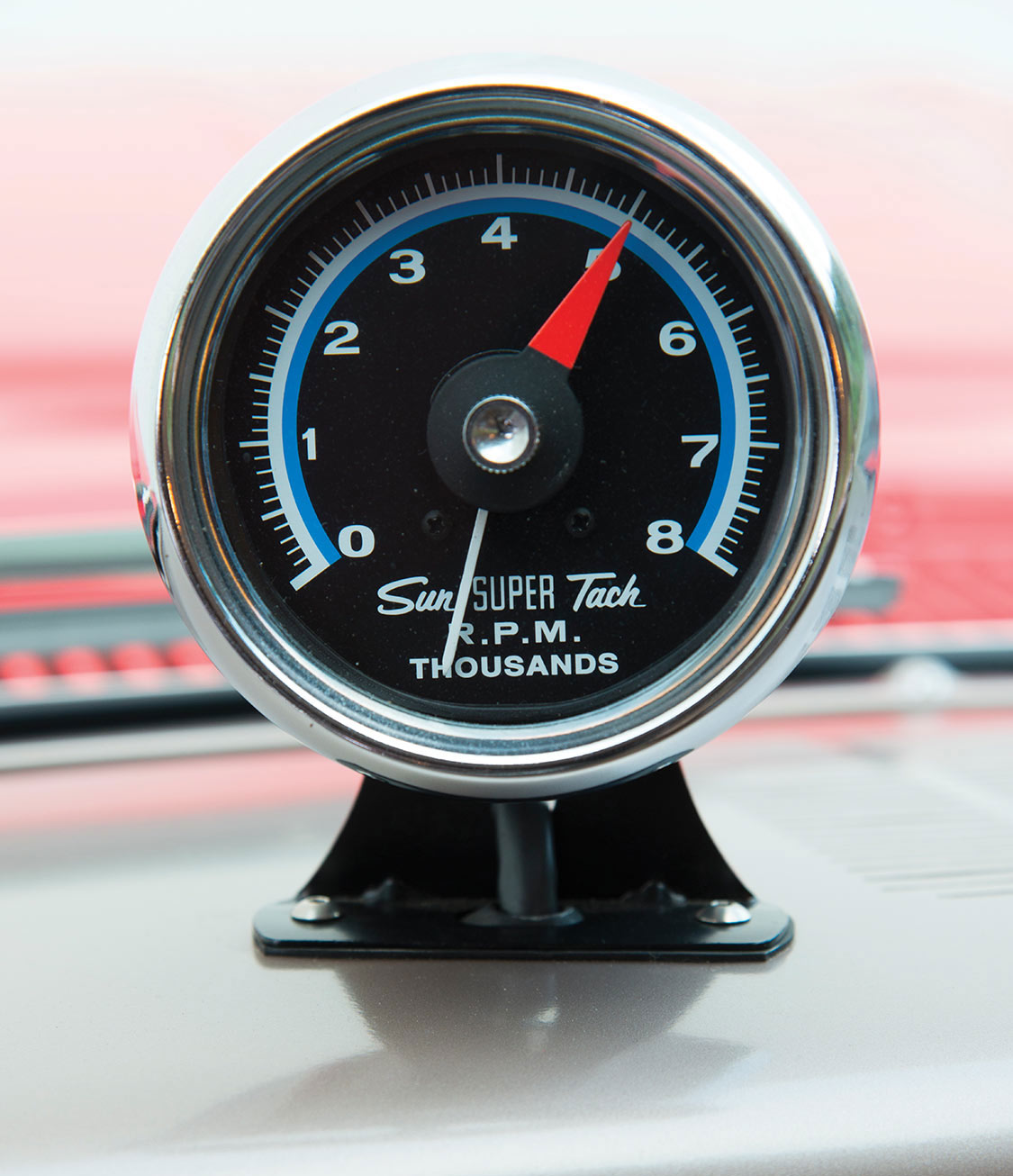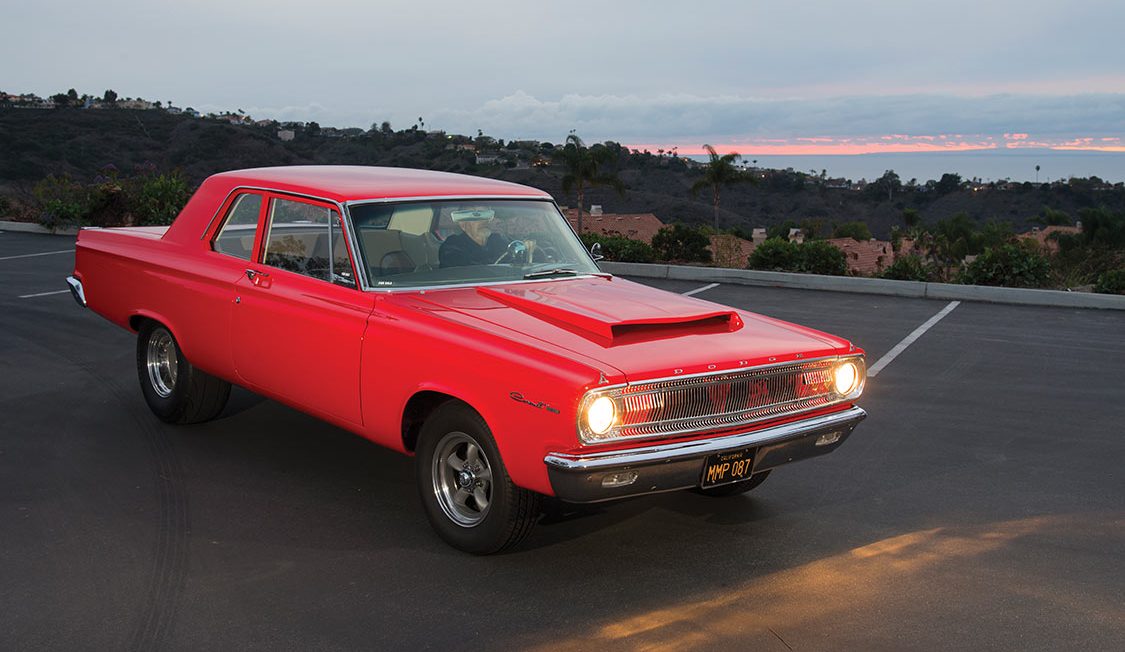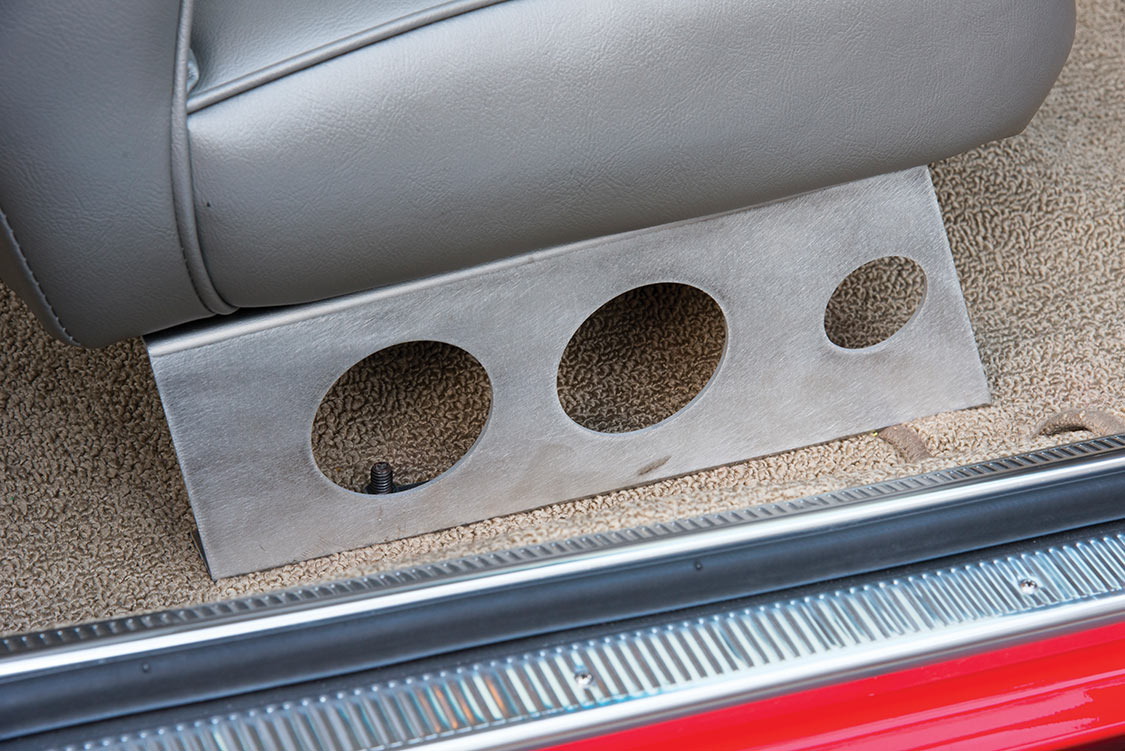 Lou Leto
.
April 26, 2023
.
All Feature Vehicles
Lou Leto
.
April 26, 2023
.
All Feature Vehicles

To authenticate his Mopar roots to the uninitiated, a Brian Dickey “background check” is in order. Dickey grew up in the time when getting a vehicle was the high school dream. For his generation, having a set of wheels allowed for independence, an opportunity to test ingenuity, and a chance to demonstrate what could be built and what could immediately show positive results. In 1964, at Granite Hills High in El Cajon, California, his ticket to motoring freedom resulted in his first car, a 2-year-old Dodge Dart that left a lasting impression. In his words: “I modified that ’62, adding a camshaft, a 4-barrel carb, and headers to the 318, and a 4.11 ratio in the rear end. I would drive it to the track, uncork it and race.” His local tracks included Ramona and Carlsbad. Eventually, he held the race record in the F/SA Formula at 14.10. With that experience, Mopar performance would forever flow in his blood.


“In 1968, I bought a brand-new ’69 Dart GTS with a 340 and automatic,” he reminisces. “I drove it until ’75.” When asked about his track forays, Dickey admits, “I raced it a few times.” Then like many stories of the era, he took a hiatus due to a growing career, gaining much success in an emerging industry and creating a distribution company with his wife.
Fast forward to 1997, when he bought “a two-owner 1964 Plymouth Belvedere 2-door sedan, with radio delete. It had only 65,000 miles. It was the perfect donor for my first A990 clone.” It took Dickey two years to complete, in his newly formed hobby shop called Dickey’s Hot Rods. The factory color LL-1 Green Plymouth became what I refer to as his “burger car,” as he drove the now-Hemi-powered Plymouth to many local car scene activities. Dickey’s Hot Rods was not a commercial enterprise, as he was “trying to have fun and keep active.” Any work that was accepted was by referral only. With the “burger car,” Dickey confessed that he “regained the Mopar bug again.” With a vengeance. Customer projects coming through the shop included a 1962 Dart Max Wedge, a ground-up 1963 Dodge build and a black 1965 Plymouth.


Yet true to the Hot Rods moniker of the hobby shop, Dickey was also building serious rods. How serious? Dickey’s Rods have been judged in the granddaddy of all hot rod events: the Grand National Roadster Show (GNRS). His first entry was in 2000, a 1937 Ford coupe. “I won my class,” he humbly admits. Dickey came back in 2012 with a roadster to compete for the towering trophy awarded to America’s Most Beautiful Roadster, with Merlot, a 1933 Ford-powered roadster; it was selected as a Top 10 contender. He’s currently finishing his next personal rod, a 1936 Ford five-window coupe that has been selected for the 2015 GNRS.
Dickey longed to get back to drag racing where he started. Six years ago, he built and raced what became the quickest naturally aspirated B-body in the country, a Keith Black Hemi-powered 1965 Dodge Coronet coated in Viper Red, eventually laying down an 8.70 elapsed time at 160 mph. After selling the purpose-built race car, “I had to have another Viper Red ’65 Coronet,” he admitted. That’s where the story of this feature vehicle begins.

“I bought this Coronet three years ago,“ Dickey reveals. “It was a California survivor, found on an Indian reservation near Temecula.” He also found and acquired a rusty 1963 Dodge 4-door sedan. “Someone had put $100,000 inserting a huge Hemi drivetrain,” Dickey exclaims. Looking at photos of the condition of the 1963 as it arrived at his shop, one still wonders why. But no one had to wonder about the direction he was taking the project.
Dickey disassembled both Dodges. The ’63 drivetrain was treated to a full rebuild and detail. What started as a 528-cu.-in. Hemi crate motor (from Chrysler) ended up with much more than a cosmetic make-over. First, the obvious: The Indy manifold with throttle body fuel injection was jettisoned, replaced with an A-and-A cross-ram, an accurate reproduction of the 1965 factory drag race intake manifold. Dickey installed a brace of correct Holley carburetors to add to the authentic look that he desired. When the Hemi was rebuilt, aggressive is the repetitive word when Dickey describes “a more aggressive cam and more aggressive compression (11 to 1). Quality and detail was the edict for the Dale Reed build, and is evident in the choice of the Holley, Comp Cams, Fluidamper, Mellings, Mopar Performance and Milodon engine components. Equal to that quality is the rebuild of the stout, fully automatic, 727 transmission, the Dana 60 rear end and the Gear Vendors overdrive. Dickey built this car to drive. “With the overdrive, the 4.11’s become a great cruising gear,” he says.


While the Coronet was considered a mid-size car in its day, in 1965 it still required special front-end modifications by the factory to shoehorn in the 426 “elephant” engine equipped with the wide hemispherical cylinder heads. Dickey had to do the same. “The passenger shock tower was cut and moved to make room for this Hemi,” he advises, “and I had access to a rare correct Hemi K-member that was in the shop, left over from a customer car straight-axle conversion.”
The chassis prep was equal to the engine preparation. This Dodge received the full rotisserie treatment after being media-blasted to bare metal, and more. “Frame stiffeners, mini-tubs and a narrowed rear end for more tire,” are just some of the back-end reveal. Michael Santacruz of Energy Suspension supplied a number of component upgrades that Dickey dictated. Disc brakes all around provide more than adequate halting from high speeds.

The final appearance was of importance, too. Jeff Johnson at Carlsbad Village Auto Body capably coated the Coronet in Viper Red. All brightwork was re-chromed, all stainless-steel trim was straightened and all-new glass went into the all-steel, now laser-straight Coronet body. The single headlight grille indicates the A990 origins.
Factory A990 cars had Dodge A100 van bucket seats with lightweight aluminum mount-ing brackets in their Cham-pagne-colored interiors. Dickey chose Danny Romo in Irwindale to duplicate the interior color and textures for this Dodge. Redline Instruments rebuilt all the gauges, installed into a newly re-chromed dash insert.


Built with a daily driver/racer concept, this Coronet has “an 11-second potential,” Dickey surmises. To preserve the look and the ride, it rolls on 15-in. traditional American Racing Torque Thrust D wheels; sevens up front with Mickey Thompson (M/T) tires and 10s slung with M/T drag radial tires in the rear.
Those who can remember the Dodge commercials of the mid- to late-1960s, using the little old lady from Pasadena who would drive up in some Dodge performance car and say: “Put a Dodge in your garage, Honey!” couldn’t have predicted that Brian Dickey would do just that again with a superb example, a half-century later.


Share Link